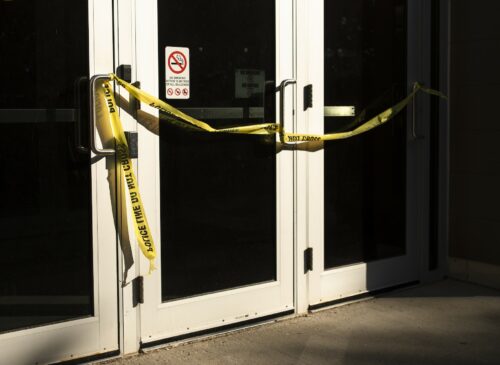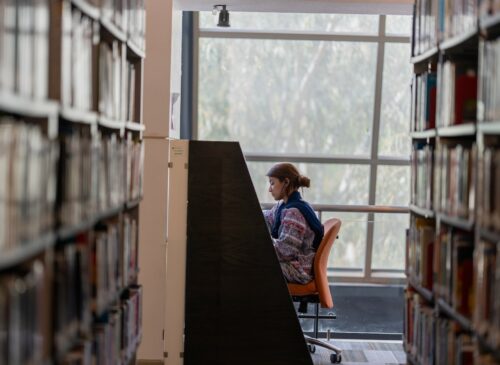Allow me to plant a marker in your mind. It is the theme of intellectual outreach—the process whereby an academic makes a concerted decision to spend a good portion of his or her time taking scholarly work from the academic heritage of ‘the gown’ to ‘the town’. My aim is to address an invisible boundary between ‘the gown’ of the academic community and ‘the town’ of the public at large and discuss the not-too-stable relationship between the two.
In an age that increasingly speaks of citizen science, citizen journalism, Internet medicine, and increasingly (via mass collaboration platforms and open-source intellectual communities) the wisdom of crowds, the role between the academic university and the public (between town and gown) remains an underdeveloped topic from the point of view of academic careers. And, I underline “from the point of view of academic careers.”
The same cannot be said for the underdevelopment of this theme with regard to funding models, academic freedom, or the job preparedness of graduates. Typically the town and gown theme is framed by universities as a requirement of survival—achieve public support via enhanced alliances with the broader community, and with ongoing legitimacy secured, stabilize and grow one’s budget. In turn the town looks to the gown as a means of providing an intelligent workforce that fuels the growth of competitive regions and nations. Thus the well-worn path between the town and gown discussion is rather simple: the town should invest in the gown in order to attain benefits which cannot easily be found elsewhere. In turn, the gown should strive for scholarly excellence and therein justly receive the favours of the town.
It is my view that this well-worn path between the town and gown is rife with difficulties. The town in its wisdom—a wisdom that increases in intensity and stamina during economic hard times—wants to see the benefits of knowledge transfer from its investment. The town, not surprisingly, is street savvy. In an era in which knowledge is globalized it asks: why in a tough fiscal period, should we invest locally? Why not pluck knowledge out of the ether? Why not piggyback on developments paid for by other investors elsewhere? Sit back, then, return to investing in the local gown when the economy improves?
One would think that the gown over time has developed an articulate response to the propensity of the town to turn away from local investment during hard economic times. In the playbook of the administrative leaders of the gown there is an ongoing recognition that the university must make allies who are deep-pocketed, politically powerful, and, if and when neither of these is easily secured, a vocal general public ready and prepared to raise its voice on behalf of the now needy university.
As a player in the gown for more than three decades, I must make it clear that the playbook of the administrators translates poorly into the reward system of the scholar/academic (i.e. the grassroots gown member). I have learned, and perhaps am here today due to my subtle violation of the norms and folkways (a quaint sociological phrase for the do’s and don’ts of a community), of the traditional town and gown model. The more the everyday gown citizen is cited by others inside the gown community, the more his or her star status soars. This is self-evident. It is axiomatic. The scholarly citation backed by the rigor of peer review and transmission of knowledge into the information or knowledge commons is the hard currency of the super gown member. This is a refined and intellectually rigorous game. It certainly is not for the fainthearted.
Much as I respect the diamond sutra of intellect this produces, there is, dare I say, a weakness to this particular strategic focus. Recall now that the town and its local incarnation turns away from the gown in order to grab knowledge from the ether during tough fiscal times. The scholar feeds this trend by contributing her work to the intellectual commons in order to advance her career. The rational town members look for a free or a low-cost ride by reducing their contribution to the local gown. Why not ride out the storm? Why not allow themselves to be carried by those elsewhere who are either in the midst of good times or are slower to see the virtue of thrift? A global community of academics have ensured a healthy supply of knowledge for the taking.
My solution—and here comes the ambidextrous gown foreshadowed in the title—is to establish a viable reward for scholars who customize and translate their research directly to the town. This does not mean dismantling the ideal of the global information commons or ceasing to bring one’s work to the best and most cited intellectual outlets. It does mean taking an extra step. Reward those who publish well and who are widely funded and cited by their peers. But also create and reward a gown trajectory that encourages academics to bring knowledge into the living rooms, parlours, boardrooms, and civic debates of the town.
On one hand, universalize knowledge; on the other customize it for local users. The customization of knowledge for the local town makes the university a dual or ambidextrous strategist. It must satisfy the universalist criteria of contributing to the knowledge commons. To do so it must reward its best and brightest for publishing, receiving grant money, and contributing to the information commons. On the other hand, it must recognize and reward a means of customizing knowledge so its local application is recognized, appreciated, and integrated into the economy and heartbeat of the town.
To do so the university must slowly and cautiously devolve its reliance upon the university administrator as the primary means of developing town outreach. It ought to supplement this with a viable group of scholars trained and operating locally who can show and point towards the local value of the gown.
Universities are like all one-headed entities. They worry about the coordination required to engage in an ambidextrous strategy of both universalizing and customizing knowledge. A mission statement should of course get to the point clearly and cleanly. Strategies, however, are not mission statements. Like all those who juggle shifting realities, the key for the juggler is to know how to find a workable balance, an understanding of sequence and preparedness. As one hand shifts a ball, the other sets the next ball in motion. It defines an arc and gently falls into the just-freed hand. Becoming ambidextrous certainly is not easy. It takes practice and hard work.
I encourage university administrators and faculty to develop a reward system for those who not only seek to get cited but whom in finding encouragement in and by the scholarly community—whether in philosophy, chemistry, linguistics or mathematics—take an added step. They customize their knowledge to meet or address local needs. An ambidextrous gown coordinates the joint movements of customizing and universalizing. Gown administrators and faculty must weigh and work out the prioritizing of customizing and universalizing. The university that builds bridges into the information commons and into the local community is a university built for all economic seasons.
Let me summarize this meditation and locate it in the personal—Dr. Mark N. Wexler, the University Professor of Business Ethics and Management at the Segal Graduate School of Business, Simon Fraser University. I have over the years seen the need to supplement the universalist strategy of building the information commons with the work of bringing my discipline into corporate boardrooms, newspaper discussions, public controversies, elementary classrooms and public dialogues at the Carnegie Center, union halls, NGO’s reports, and advisory boards. Over the years my career has moved towards recognizing the importance of building local town and gown relations. I presently work with over 45 companies, not-for-profits, government agencies and fledgling social movement groups. In this work, I try hard to show the relevance of the life of the gown to the heartbeat of the town.
I would be remiss to insist upon my own career as an exemplar of this ambidextrous town and gown relationship. There are many options. In the sciences it is vital not only to provide academics and their sponsoring universities with bridging incentives into the corporate world of applied technology, but also to make sure that those bringing technology to market are aware of recent advances in science and mechanics. As well, bringing science into the living rooms of the nation via high quality treatments of scientific topics relevant to contemporary life is vital. The issue in making science popular is not to dumb it down, but to create an excitement about this approach to applying knowledge.
Ambidexterity in the social sciences requires far more than government involvement in matching grants. I believe the university must become more involved in contemporary controversies, with discussions about how the prison system is run, about homelessness, vaccination in the public interest, and so on. The public is interested in the view corridor provided by the university. However, in my view it must actually be a view corridor, which acknowledges and deals with the controversy rather than presenting the politically correct point of view. This entails a willingness, within what has been a rather tight-lipped version of the university, to encourage academics interested in entering public debate with an informed point of view.
From the point of view of the ambidextrous gown, there is a great deal to be done in the humanities and arts. While scholarship in these fields is ongoing and ought to continue, improvements in the town and gown relationship would be forthcoming if the university were to provide incentives for faculty members to produce public commentaries, theatre reviews, historical analyses of particular movies, and engaging public discussions of the performance of political figures in public venues. The arts and humanities become part and parcel of the ambidextrous gown when they are understood to be an integral part of the everyday culture of those who live in the town.
Perhaps my version of the ambidextrous gown is too eager to please. The crucial point, one that must not be forgotten when addressing ‘town and gown’ is that the desire to increase good relations with the town is not the aim of the university, nor should truth and the pursuit of principled knowledge be bent to suit public sensibility. Rather, the university must work out how to develop its gown strategy, and align it to its pursuit of principled knowledge. Ambidexterity requires coordination. It requires that the university take a genuine interest in the town, get involved, make friends, and develop ways of integrating the vocabulary of the university into the daily life of the town. While this may seem a bit idealistic, it is one of the vital goals of a sustainable university in the 21st century.
Knowing what I do now, I recognize that it is not simple to create mature relationships between institutions and their communities. But without a concerted and aligned strategy to bring together the town with the university and faculty, the latter will grow increasingly isolated.










